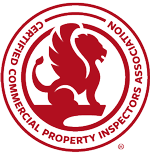Emergencies can happen anywhere and at any time. Commercial building owners and managers must ensure the proper implementation of safety features to protect occupants. For instance, exit signs and emergency lighting are essential safety features that illuminate the path to safety in low-visibility situations. Commercial inspectors should find these features at all types of commercial buildings.
Exit Signs and Emergency Lighting Inspection Requirements
Exit signs and emergency lighting can be easily overlooked during an inspection. Commercial property inspections performed in adherence to the International Standards of Practice for Inspecting Commercial Properties (ComSOP) require the inspector to look primarily for the presence of exit signs and emergency lighting.
Section 6.5.12 Life Safety states that the inspector should:
N. inspect for the presence of emergency lighting systems;
O. inspect for exit signs at all exits, and inspect for independent power sources, such
as batteries; and
P. inspect for the presence of directional signs where an exit location is not obvious.
There are several regulatory agencies and codes that govern exit signs and emergency lighting requirements. These agencies include:
- the Occupational Safety and Health Administration (OSHA);
- the National Fire Protection Association (NFPA);
- the Joint Commission on Accreditation Health Organization (JCAHO);
- the International Fire Code; and
- the International Building Code (IBC).
There are specific life safety guidelines for exit signs and emergency lighting for different types and functions of commercial buildings. Different levels of government are involved in the regulatory oversight to ensure their compliance with the building codes. The particular building code enforced depends on the jurisdiction. In many cases, requirements determined by OSHA and the NFPA are adopted. Violations can result in serious fines. For instance, the owner of a business can incur penalties of up to $250,000 for a willful violation that involves the death of a worker. The fine could be doubled for a corporation.
Commercial inspectors do not need to know the exact code information. However, some clients may be interested in a more detailed assessment of life safety than what is normally provided in a baseline commercial inspection, so it’s beneficial for the commercial inspector to be familiar with local regulations. Inspectors may also choose to work with specialty consultants, as needed. For example, electricians tend to be familiar with exit signs, emergency lighting, and other life safety features. Inspectors may also consider reaching out to the local fire marshal or fire inspectors to gain additional information about locally adopted codes and standards.
Exit Sign Requirements
An exit sign should allow occupants to identify an exit for general egress and in the event of a fire or other emergency situation. Most exit signs are illuminated with red or green lights. OSHA covers exit signs and emergency lighting in Standard Number 1910.37. For context, “exit route” is defined as “a continuous and unobstructed path of exit travel from any point within a workspace to a place of safety (including refuge areas) in Standard Number 1910.34(c).”
These exit routes include vertical and horizontal areas along the route. The three parts to an exit route include:
- the exit access, which is the portion of an exit route leading to an exit;
- the exit, which is the portion of an exit route that is generally separated from other areas to provide a protected way to travel to an exit discharge; and
- the exit discharge, which is the part of the exit route that leads directly outside or to a street, walkway, refuse area, public way, or open space with access to the outside.
OSHA Standard Number 1910.37(b) states that lighting and marking must be adequate and appropriate. The specifications read:
- Each exit route must be adequately lighted so that an employee with normal vision can see along the exit route.
- Each exit must be clearly visible and marked by a sign reading “Exit.”
- Each exit route door must be free of decorations or signs that obscure the visibility of the exit route door.
- If the direction of travel to the exit or exit discharge is not immediately apparent, signs must be posted along the exit access indicating the direction of travel to the nearest exit and exit discharge. Additionally, the line of sight to an exit sign must be clearly visible at all times.
- Each doorway or passage along an exit access that could be mistaken for an exit must be marked “Not an Exit” or some similar designation, or be identified by a sign indicating its actual use (e.g., “Closet”).
- Each exit sign must be illuminated to a surface value of at least five foot-candles (54 lux) by a reliable light source and be distinctive in color. Self-luminous or electroluminescent signs that have a minimum luminance surface value of at least 0.06 foot lamberts (0.21 cd/m2) are permitted.
- Each exit sign must have the word “Exit” in plainly legible letters not less than 6 inches high, with the principal strokes of the letters in the word “Exit” not less than 3/4-inch wide.
OSHA Standard Number 1910.35 reviews compliance with alternate exit route codes. It states that the exit route provisions outlined in NFPA 101, Life Safety Code, 2009, or the International Fire Code, 2009 edition, are considered acceptable. Employers demonstrating compliance with either standard are in compliance with OSHA. However, state and local regulations may differ.
NFPA 101 also reviews exit sign placement and visibility. It states that exit signs must be illuminated by a reliable light source and must be legible in both normal and emergency exit lighting modes. Both the NFPA and IFC Codes review acceptable forms of illumination. For instance, the NFPA states that an externally illuminated sign must have a level of illumination of not less than five foot-candle lighting (54 lux) at the illuminated surface and a contrast ratio of not less than five-tenths.
Emergency Lighting Requirements
Unlike for exit signs, OSHA doesn’t have regulations regarding emergency lighting. It’s primarily covered by NFPA Life Safety 101 Code, but the local AHJ is always the best resource to ensure total compliance.
Commercial, industrial, institutional, educational, religious, medical, and many other building types generally require emergency lighting. It allows occupants to find their way out of a building, and also to safety in the event of an emergency. The common areas include stairs, aisles, escalators, ramps, and all other points and pathways that lead to an exit. Exemptions include areas that are not routinely occupied, towers designed for no more than three people at a time (i.e., forest fire observation towers), and buildings occupied only during daylight hours if sufficient natural lighting illuminates the exit routes. Exemptions must be approved by the AHJ.
Section 7.9 in the NFPA Life Safety Code states that emergency lighting must maintain an internal power source for at least 1.5 hours at an average of one-foot candle lighting, but never so bright as to potentially cause night blindness in any one location, or to be dark in other locations. The code also requires that emergency lighting is enabled automatically if a power failure occurs from a power outage, blown fuses or circuit breakers, or manual acts that result in an interruption of normal lighting. In the case of a power outage or other emergency, lights must be hardwired and have a backup power system.
Life Safety Inspection Tips for Commercial Inspectors
Commercial inspectors may find it helpful to assess exit signs and emergency lighting by imagining themselves in an emergency situation at the property. If you notice that you can’t see an exit sign or can’t find an exit route, then further investigation may be needed. All exit signs and emergency lighting should point the way out of the building, and exit signs should always be illuminated.
The ComSOP doesn’t require a detailed assessment of exit signs or emergency lighting. However, commercial inspectors should keep in mind the OSHA and NFPA requirements. Any opportunity to inform the client of potential issues should be pursued. Also, note that the NFPA requires routine system testing, with monthly and annual written records maintained for the AHJ. During the research and document procurement portion of your inspection, you can refer to these documents to determine whether these life safety features have been properly maintained.
Summary
Exit signs and emergency lighting are essential life safety features in commercial buildings. These fixtures help occupants find exit routes in low-visibility situations. Commercial inspectors performing an inspection according to the ComSOP should require confirmation of the presence of exit signs and emergency lighting, in addition to backup power sources. However, some clients may require a more detailed assessment than what a baseline commercial property inspection provides, and a consultant may be needed.
There are several agencies and codes for exit signs and emergency lighting. OSHA Standard Number 1910.37 and the NFPA Life Safety 101 are most commonly adopted by the AHJ. Inspectors should check with their AHJ to find out the local requirements. OSHA and the NFPA have guidelines for exit signs, while the NFPA has guidelines for emergency lighting. Documents related to the system’s maintenance may be helpful in determining whether a system is operating properly, or whether a more in-depth inspection is needed for your client.
Additional Commercial Property Inspector Resources:


